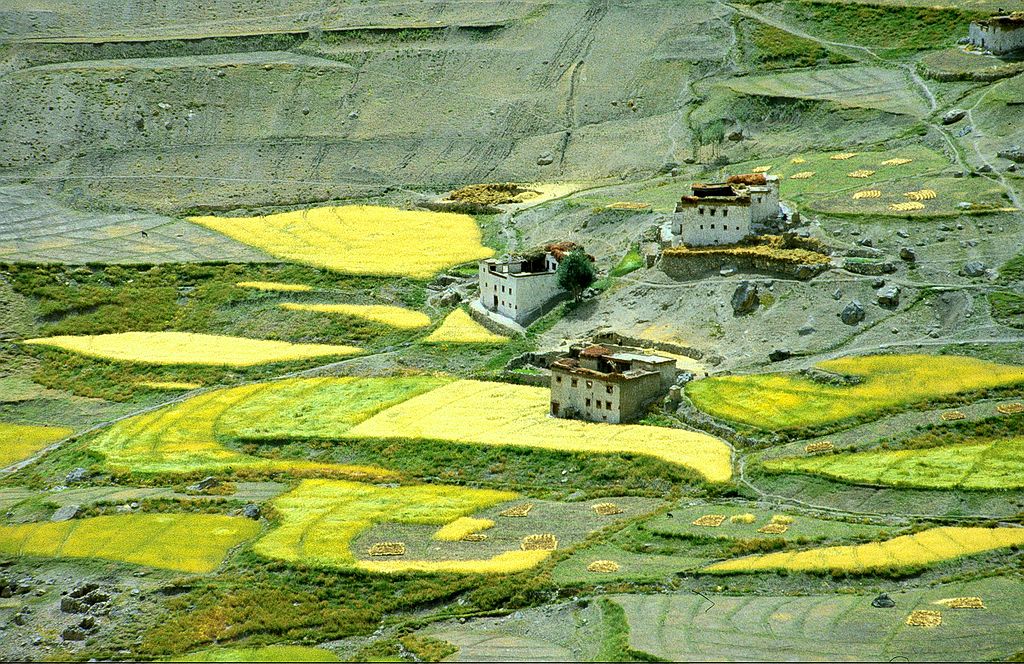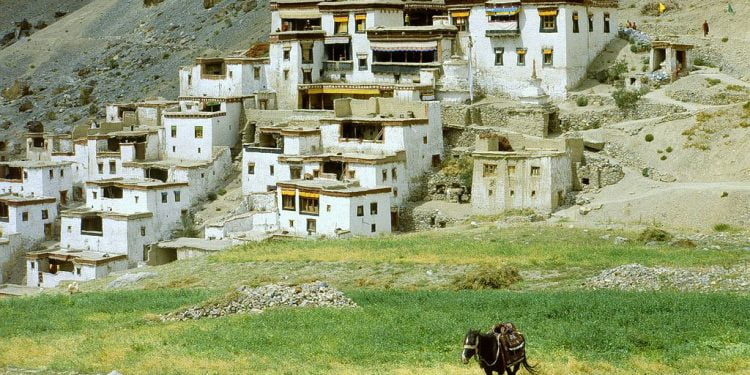The illustrious Lingshed Monastery, also known as Lingshed Gompa, stands as a beacon of Gelugpa Buddhist wisdom in the sacred lands of Ladakh within the majestic realm of Jammu and Kashmir, India. Its origins trace back to the 1440s when the venerable Changsems Sherabs Zangpo, a devout disciple of the great Je Tsongkhapa, laid the foundation on a hallowed monastic ground once graced by the revered Translator Rinchen Zangpo. Since the auspicious year of 1779, this sacred institution has been under the divine guardianship of the esteemed Ngari Rinpoche, further enriching its spiritual legacy. In 1994, the blessed Jangchub Tensung Dorje Center was inaugurated within the venerable walls of Lingshed by the revered Kyabje Dagom Rinpoche, offering sanctuary and guidance to seekers of truth and enlightenment.
Shrine’s History
The ancient village of Lingshed, nestled in the sacred Trans-Sengge-La region that links Ladakh and Zanskar, bears witness to a rich history spanning almost a millennium. Once revered as a prime hunting ground, the village’s very name resonates with tales of its noble past. Over the centuries, Lingshed has served as a sanctuary for the devout, with the sacred grounds being graced by the presence of revered Buddhist monasteries. Remnants of a mystical cave sanctuary and towering walls dedicated to the esteemed translator Rinchen Zangpo (958?1055) still stand as testaments to the spiritual heritage of this hallowed land. Legend has it that the valley also cradled the teachings of ancient Kadampa and Drugpa Kagyu monasteries, further enriching the mystical aura that surrounds Lingshed.
The illustrious Lingshed Monastery was established in the 1440s as a Geluk School Monastery by the venerable Changsems Sharab’s Zangpo, a devoted disciple of the renowned Tibetan preceptor Je Tsongkhapa. According to local lore, Sharab’s Zangpo, having previously founded the esteemed Karsha and Phugtal Monasteries to the south, embarked on a journey across the majestic Hanuma-La Pass situated to the south of Lingshed. It is said that from this vantage point, he beheld a celestial phenomenon – an ‘auspicious shining light’ illuminating a rock on the hillside. In reverence to this divine sign, he constructed a chorten atop the rock, which would later form the sacred nucleus of Kumbum’s central shrine, known as Tashi ‘Od Bar.
In the year of our Lord 1779, the noble Ladakhi monarch Tsewang Namgyal bestowed the sacred lands of Lingshed and its encompassing villages unto the venerable Lobsang Gelek Yeshe Dragpa, the third embodiment of the exalted Ngari Rinpoche lineage. Four years thereafter, in the year of grace 1783, Ngari Rinpoche, in his divine wisdom, established the illustrious Rangdum Monastery upon the threshold of the Karsha Valley as his supreme spiritual abode, asserting authority over the revered Lingshed domain.


Shrine’s Map Location and How to Go There
Ladakh is situated at a distance of 434 km from Srinagar and 494 km from Manali. To travel to Ladakh, one can opt for hiring a cab, jeep, or boarding a JKSRTC bus. Another option is to embark on a bike trip to Leh from Srinagar, Manali, or Chandigarh, depending on the available time. It is important to note that the highways are closed during the winter months due to heavy snowfalls, and travel to Ladakh by road is only feasible between May and September. For those considering rail travel, the nearest railway station is Jammu Tawi, located 700 km from Ladakh. Jammu Tawi is well connected with major cities like Delhi, Kolkata, and Mumbai. From Jammu Tawi, one can hire a cab or board a JKSRTC bus to reach Ladakh. When opting for air travel, Ladakh is served by one airport in Leh. Daily flights operate from Leh to Delhi, and there are weekly flights to Srinagar and Jammu as well.






































